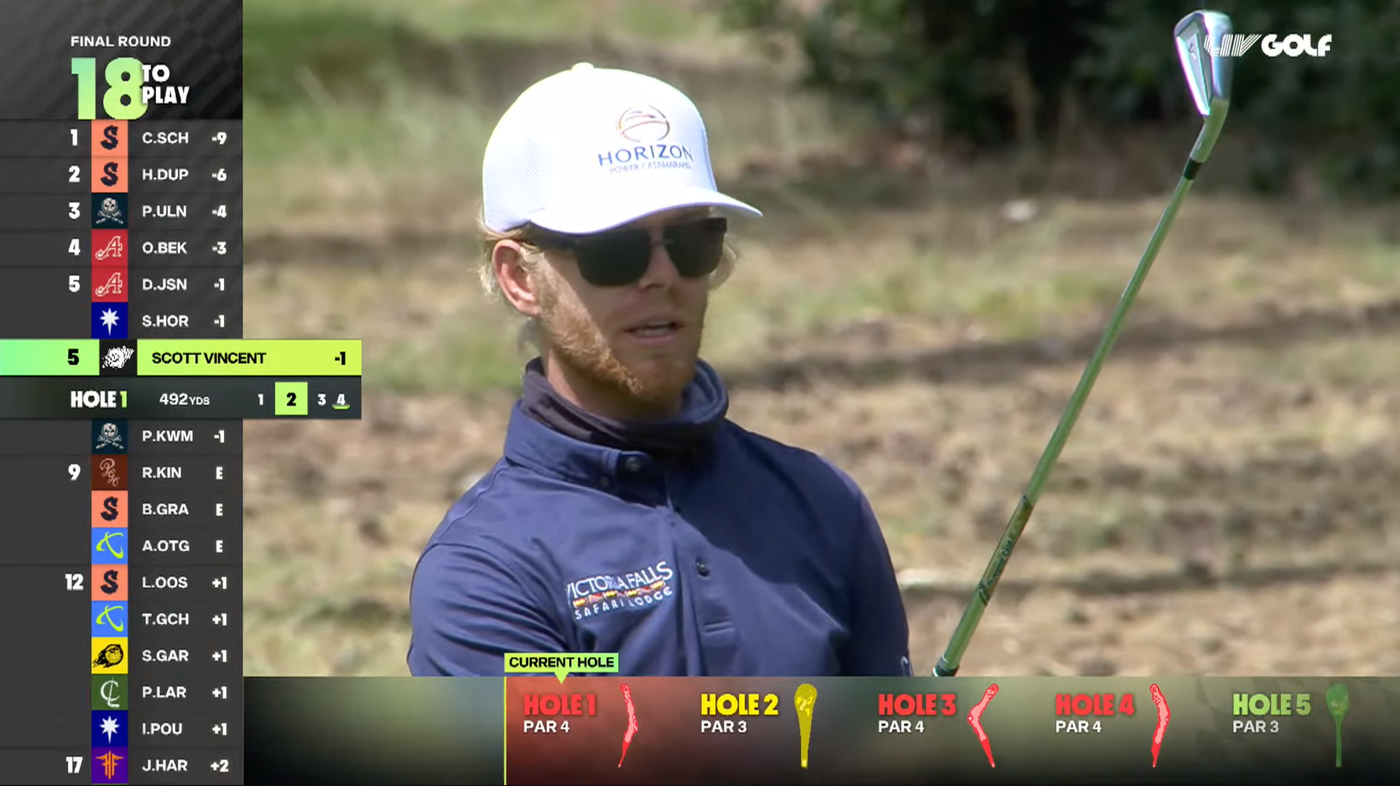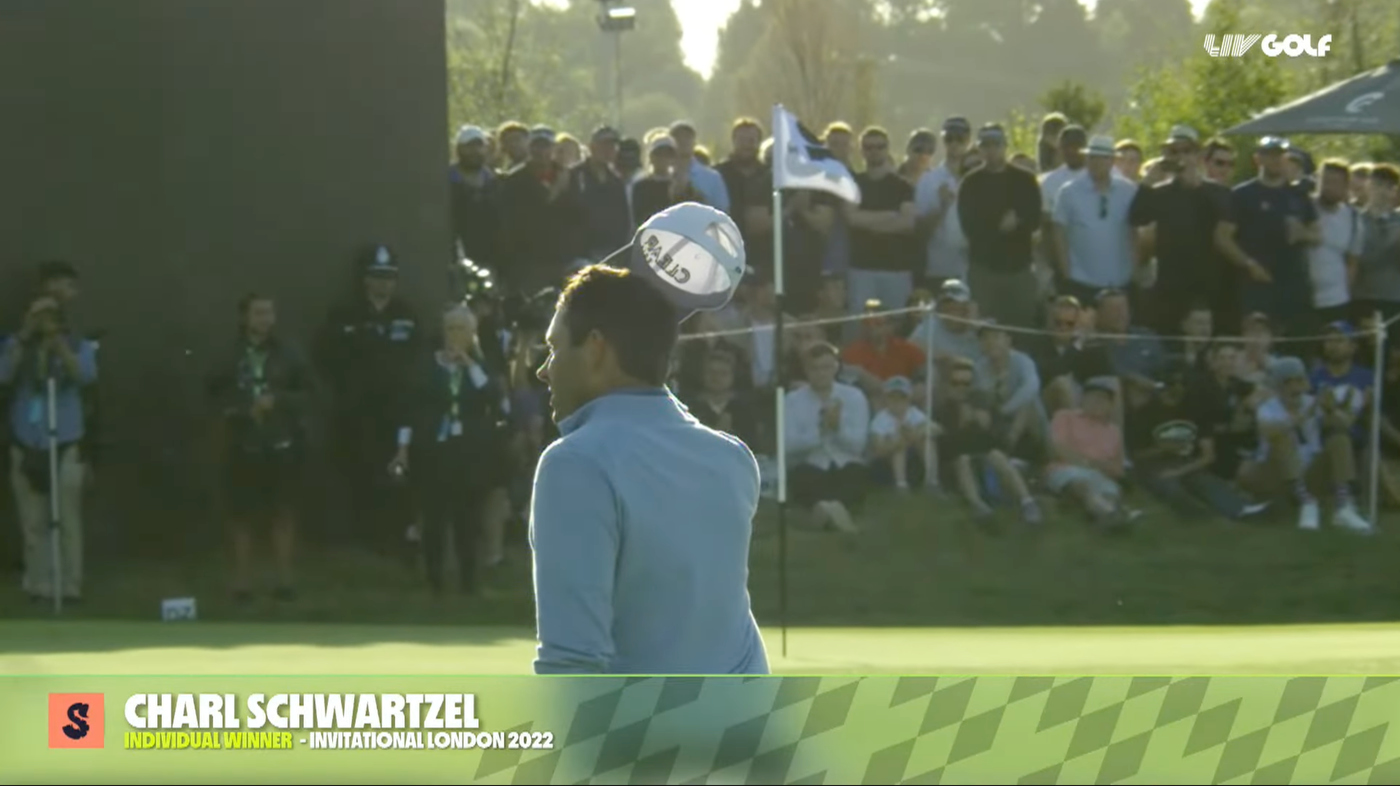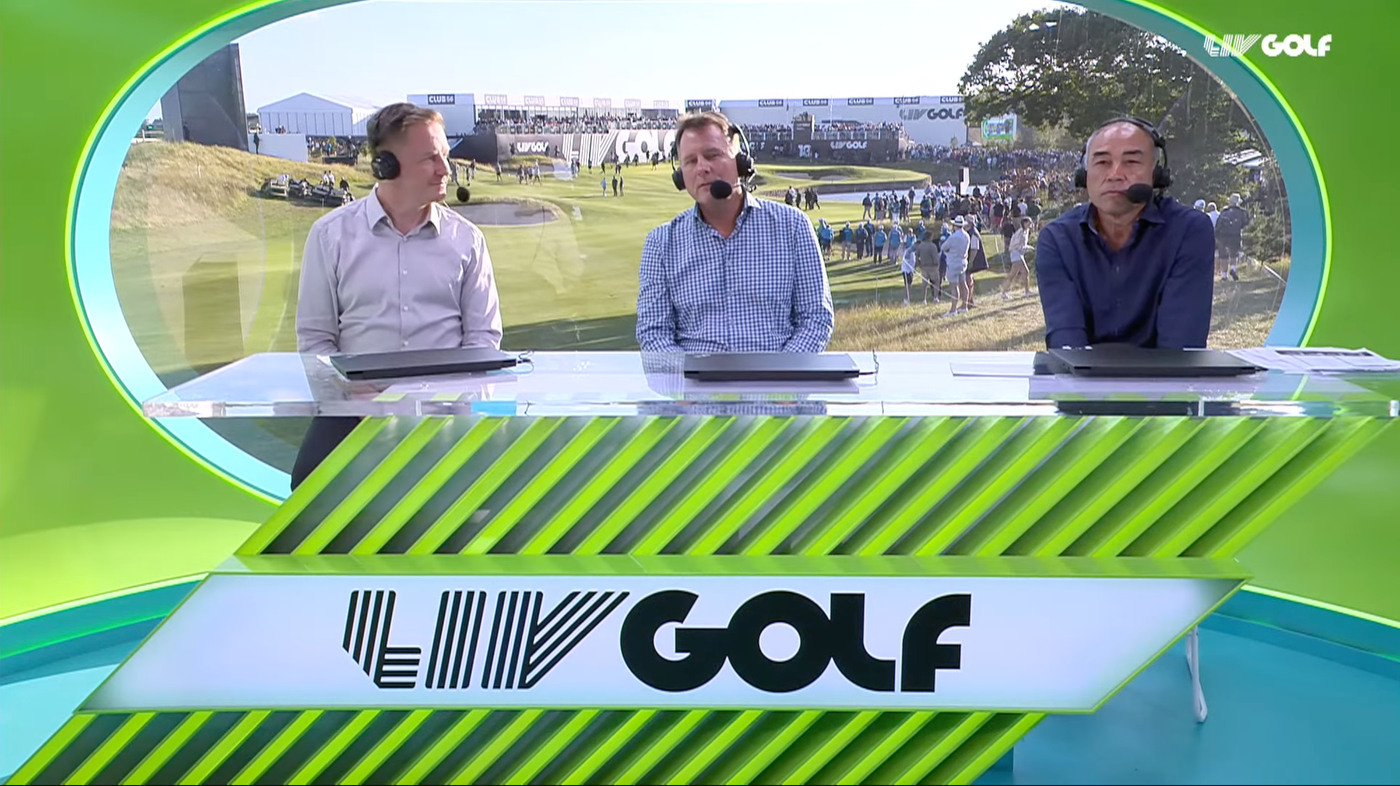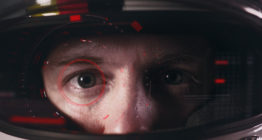LIV Golf sails over par with unique look

Subscribe to NCS for the latest news, project case studies and product announcements in broadcast technology, creative design and engineering delivered to your inbox.
In order to stand out in a sport that loves tradition, upstart golf league LIV has created an on-air design package that clearly differentiates it from its rivals through a unique take on graphics, animation and typography.
LIV Golf teed off play for its first invitational series at the Centurion Club in England on June 9, 2022.
The league’s look centers around a bold, custom-drawn logotype that sees the “LIV” portion set in distinct letterforms created from four stripes with a folded ribbon-like angles evocative of the groves found on the face of a golf club, though it could also be read as the notoriously neat mow lines along a fairway or the various angles and geometry that come into play in the sport.

“LIV,” which is officially pronounced as if it were the word “live” (as in “I practically live at the station” as opposed to “A need to make my live shot”), is derived from the Roman Numeral for the number 54, which is the score if a player were to play all 18 holes in a game and birdie each hole — that is, scoring one stroke under par on each hole.
Next to this is the word “Golf” that’s been drawn in super-tightly spaced and highly curved letters created using a look that appears at least partially inspired by the Bauhaus aesthetic. While the letterforms have significant differences, it’s also hard not to see similarities to the “Golf” logotype in the NBCUniversal-owned Golf Channel’s look, though LIV did not use, for example, the distinctive notches on either side of the “O.”
The various curves in the word “Golf” not only contrast with the “LIV” strokes but also, like Golf Channel’s look, convey a strong sense of motion — particularly of a small ball, which the “O” easily reads as, hurling through the air or curving gracefully around a green into a hole.
One key component of LIV’s model is that it is retaining tighter control over broadcast rights, offering a more direct-to-consumer approach that includes its own streaming platform, YouTube and Facebook feeds plus partnerships with premium and free broadcasters around the world.
The LIV Golf tournament has already attracted controversy after several pros have seen their eligibility for PGA Tour events suspended due to their participation in the inaugural season of LIV because they did not receive proper media rights releases from the PGA. The LIV Tour is headed by Greg Norman but backed by a Saudi foreign wealth fund.
The PGA Tour and LPGA Tour both got particularly cozy with Golf Channel this season, with the league and network agreeing to create co-branded logo lockups.
Complexities and squabbles over licensing and rights aside, LIV Golf worked closely with industry vet David Hill (no relation to the author), a former Fox Sports exec who also worked on the Formula 1 relaunch in 2018, as a production consultant.
Custom music was composed by Scott Schreer, who also created the famous “NFL on Fox” theme.
LIV Golf’s design is centered around a darker, distinctive hue that takes advantage of the traditional green color family often associated with the sport but in a bolder, brighter way.
Much of the green in the on-screen graphics and animations is shown in a bright, lime-green shade — whereas other golf graphics often tend to use deep greens or shades that a more toward the look of traditional greens.


In this section of the LIV Golf website, the distinct shades of green and blue, along with the frequently-used gradient effect, is illustrated.
The green is definitely bright — though it’s a bit short of being fluorescent or like the “venom” that ESPN viewers took a dislike to when it was first used in 2019. Instead, it’s a decidedly distinct shade that has the look of being carefully selected — sort of halfway between being pastel and fluorescent.
The darker component comes from the heavy use of black and deep grays in the look. Also in the package, blue, another common component of golf graphics, likely due to its connection to sky and water, is shown in a partially electric shade that also can’t help but feel a bit calmer, including as a gradient between it and the lime.
TV coverage includes an extended open narrated by actor and avid golf Dennis Quaid called “Evolution,” which serves as a sort of ode to the game backed by stylized imagery interspersed with text accents.
There’s also a more traditional animated open that starts as a horizon-inspired view with, instead of the traditional planetary surface, features the dimpled surface of a golf ball. Next, multiple arching paths of light inspired by the path of a ball flow through the scene before the spike of a tee is shown.
The animated paths of light are imagined here to help drive home the motion a tee takes while being placed in the ground before a schematic wireframe of a golf ball appears atop it, eventually filling in with a polygonal glassy texture with warm, orange-violet reflections.


Paths of light continue to be used to suggest motion as the view switches to a club as the trails of light merge together to form a burst that doubles as a transitional element, switching to a view of dark tees raining from above with a glowing golf ball behind, which eventually hurtles toward the camera and through space with additional light bursts emphasizing the motion.
Also available is an extended animated sequence, driven heavily by kinetic typography with exaggerated morphing effects alongside solid and gradient-filled textures, 3D elements and video clips, that serves as a way to explain the rules and prizes of how LIV runs.
During game coverage, viewers are provided with data-driven on-screen graphics that can include a narrow sidebar with current standings and number of holes left to play. There’s also space for a banner along the bottom that can be used to display other information, including small, rather hard to read schematics of each hole’s layout.


Instead of traditional lower thirds identifying players shown on-screen during play, the sidebar graphic has the ability to expand with a slightly wider banner element that shows the player’s full name (to save space, the normal sidebar state only uses the first initial and a three-character abbreviation of last name) along with the current number of strokes under, even with or over par along with hole-specific data including the number, length and current stroke count with par underlined in green.


For players shown outside of gameplay proper, there is a horizontal full-width bar layout available that includes the full name of the player, line for other tournament wins and the individual’s team logo icon.
Each team’s name includes the initialism “GC” after it, which is meant to be short for “golf club” and both a play on the “football club” or “FC” label used with European football (North American soccer) and the term used to refer to the equipment known as a golf club.


When the data bars are not shown, cameras can be taken fullscreen and also have a non-traditional spin on the insert graphics that identify on-screen talent. These graphics are positioned slightly higher than one would normally expect from a lower third-style graphic and are also centered without any container or box.
They also include a gentle vertical entrance and horizontal exit animation.
On-screen graphics use a combination of Sequel Sans and the more decorative MD Nichrome, which appears to be the typeface the “Golf” portion of the logotype was inspired by. It features grotesque-style curves, though they are much more exaggerated in the logo.


LIV Golf also uses a windowed, mobile studio typically positioned near the 18th hole that provides a real view of the course. The window is framed with a pill-shaped surround. The surface is green, while the bezel of the window is blue.
The space includes a glass-toped desk with a diagonal base inspired by the “LIV” part of the logo; though the angles don’t quite match.


Other graphics include wipes and stingers for teams, players and other elements. The sample shown above illustrates how the green and blue color palette is combined with team colors (the team shown happens to be named “Stinger GC,” not to be confused with the television production term “stinger”).
Also available are stinger-style graphics for players, which add a 3D pie-chart-like element meant to represent the tee or green and incorporate video of players shown in both full-body, putting positions and more traditional waist-up studio poses.




Subscribe to NCS for the latest news, project case studies and product announcements in broadcast technology, creative design and engineering delivered to your inbox.






tags
David Hill, golf, LIV Golf
categories
Branding, Broadcast Design, Graphics, Heroes, Sports Broadcasting & Production